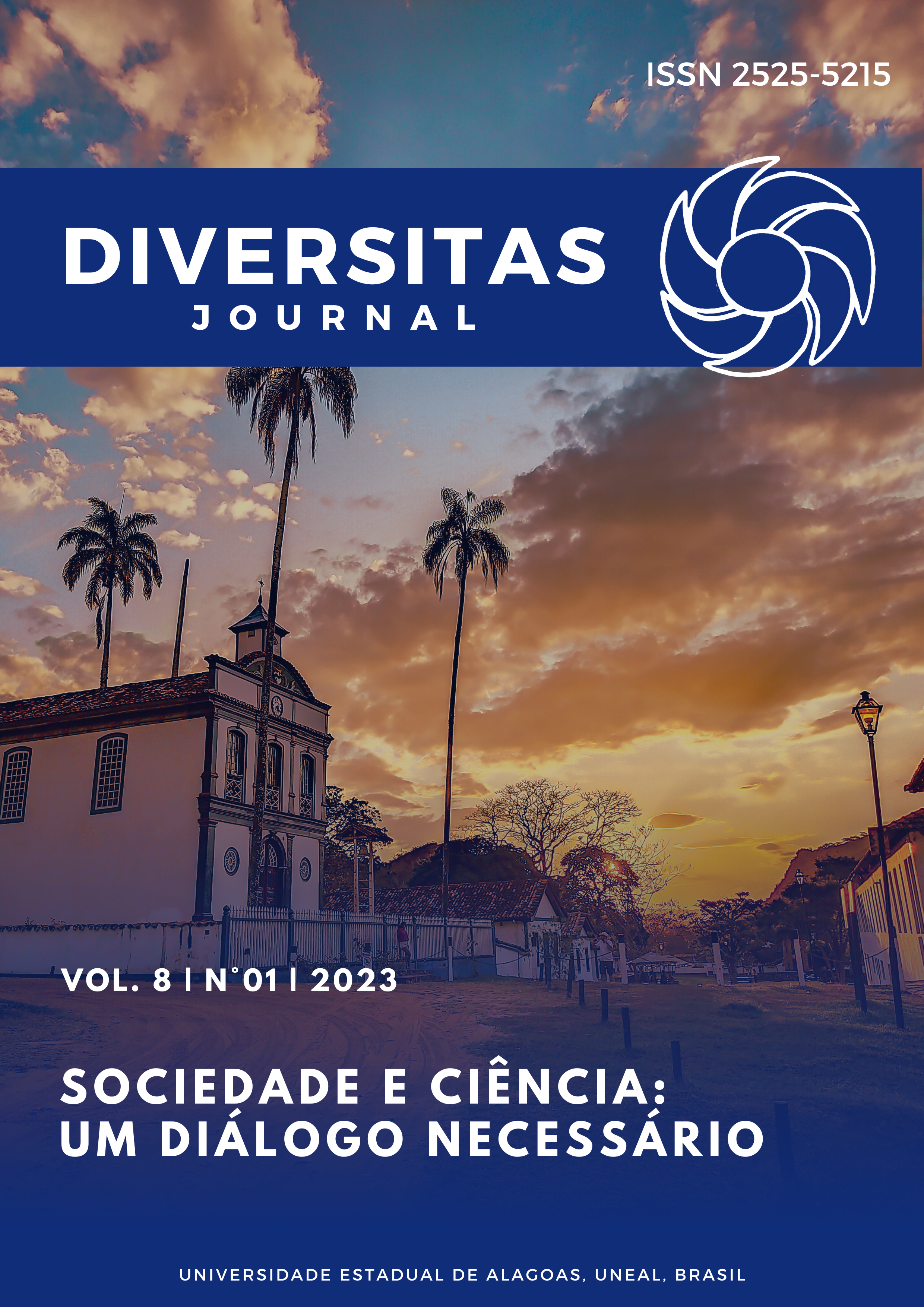Analysis of Speech: The analysis of speech featured in the Veja São Paulo magazine's front page on January, 27th of 2021.
DOI:
https://doi.org/10.48017/dj.v8i1.2085Keywords:
Análise do discurso, Revista Veja, Nordeste, discurso.Abstract
This paper aims to analyze the discourse presented on the Cover of Veja São Paulo Magazine of Edition 2722, of January 27, 2021. In this edition, the magazine brought as its central theme, the new Northeastern migrants. This cover was published in an allusion to the anniversary of the city of São Paulo, to show the influence of the new Northeastern migrants in the daily life of São Paulo. The research is part of the French Discourse Analysis (ADF) line, based on the ideas of Pêcheux (1995) and Florêncio (2009). Thus, we analyze the elements that relate to this current, in the chosen corpus, such as: the broad and restricted production conditions, the interdiscourse and the intradiscourse, the said, the unsaid, the silenced, the discursive formation and the ideological formation. The results show that Revista Veja São Paulo is the result of an ideological formation and an elitist discursive formation, of segregation, and of strong xenophobic appeal, since the speeches demonstrate the disregard for geopolitics and northeastern culture, especially, with the least favored layer economically.
Metrics
References
Associação Caatinga. https://ww.acaatinga.org.br/sobre-a-caatinga.
Barbosa, R. G. (2008). A atribuição de sentidos e o fazer significativo em crônicas de Rubem Alves: formações discursivas, interdiscurso e polifonia. [Dissertação de Mestrado, Universidade Federal da Bahia]. Biblioteca Central Reitor Macêdo Costa – UFBA. https://repositorio.ufba.br/bitstream/ri/11454/1/Ros%C3%A2ngela%20G%C3%B3is%20Barbosa.pdf
Brasil, L. L. (2011). Michel Pêcheux e a teoria da análise de discurso: desdobramentos importantes para a compreensão de uma tipologia discursiva. Ling. Est. e Pesq. 15(1). pp. 171-182. https://www.revistas.ufg.br/lep/article/viewFile/32465/17293
Cunha, F. P. (2016). Dito e o não dito: uma análise dos discursos que defendem o Acordo Ortográfico de 1990. [Trabalho de Conclusão de Curso, Universidade Federal do Rio Grande do Sul]. Lume Repositório Digital. https://www.lume.ufrgs.br/handle/10183/156946?show=full
Melo, I. F. (2009). Análise do discurso e a análise crítica do discurso: desdobramentos e intersecções. Letra Magna. (5). https://cienciaslinguagem.eca.usp.br/Melo_ADeACD.pdf
Dicionário Priberam da Língua Portuguesa [em linha]. (2008-2021). https://dicionario.priberam.org/ideo.
Florêncio, A. M. G., Magalhães, B., Sobrinho, H. F. da S., Cavalcante, M. do S. A. de O. (2009). Análise do Discurso: fundamentos e práticas. EdUfal.
Junior, J. L. C. (2014). As múltiplas matrizes discursivas da obra Os Sertões de Euclides da Cunha. [Tese de doutorado, Universidade Federal de Minas Gerais]. Repositório UFMG. https://repositorio.ufmg.br/bitstream/1843/MGSS-9VNNH2/1/as_m_ltiplas_matrizes_discursivas_da_obra_os_sert_es_de_euclides_da_cunha__jussaty_luciano_cordeir.pdf
Lins, N. F. (2013). Os Ditos e não ditos nas capas da Isto É e Veja. Revista de Divulgação Científica em Língua Portuguesa, Linguística e Literatura. (17). ISSN 1807-5193.
Löwy, M. (2003). Ideologias e Ciências Sociais: elementos para uma análise marxista. 16ª ed. Cortez.
Orlandi, E. P. (2012). Discurso em análise: Sujeito, sentido, ideologia. Pontes.
Pêcheux, M. (1995). Semântica e Discurso: uma crítica à afirmação do óbvio. Edunicamp.
Peres, E. R. (2014). Uma análise sobre o discurso da Revista Veja em relação às manifestações de junho de 2013. [Dissertação de Mestrado, Universidade Católica de Pelotas]. https://wp.ufpel.edu.br/ppgl/files/2018/11/Uma-An%C3%A1lise-Sobre-o-Discurso-da-Revista-Veja-em-Rela%C3%A7%C3%A3o-%C3%A0s-Manifesta%C3%A7%C3%B5es-de-Junho-de-2013-Eveline-Rosa-Peres.pdf
Silva, O. S. F. (2008). Os ditos e os não-ditos do discurso: movimentos de sentidos por entre os implícitos da linguagem. R. Faced, (14), pp. 39-53.
Silva, R. (2009). Linguagem e ideologia: embates teóricos. Linguagem em (Dis)curso. 9(1), pp. 157-180. https://www.scielo.br/j/ld/a/4f7VHdXQGSDshCgbkRK53JF/abstract/?lang=pt#ModalArticles
Sousa, P. de. (2011). Análise do Discurso. LLV/CCE/UFSC.
Tfouni, F. E. V. (2008). O interdito e o silêncio: duas abordagens do impossível na linguagem. Linguagem em (Dis)curso. 8(2), pp. 353-371.
https://portaldeperiodicos.animaeducacao.com.br/index.php/Linguagem_Discurso/article/view/393
Downloads
Published
How to Cite
Issue
Section
License
Copyright (c) 2022 Erisson Jordan Ferreira Fonseca, Jaqueline Maria da Silva

This work is licensed under a Creative Commons Attribution 4.0 International License.
The Diversitas Journal expresses that the articles are the sole responsibility of the Authors, who are familiar with Brazilian and international legislation.
Articles are peer-reviewed and care should be taken to warn of the possible incidence of plagiarism. However, plagiarism is an indisputable action by the authors.
The violation of copyright is a crime, provided for in article 184 of the Brazilian Penal Code: “Art. 184 Violating copyright and related rights: Penalty - detention, from 3 (three) months to 1 (one) year, or fine. § 1 If the violation consists of total or partial reproduction, for the purpose of direct or indirect profit, by any means or process, of intellectual work, interpretation, performance or phonogram, without the express authorization of the author, the performer, the producer , as the case may be, or whoever represents them: Penalty - imprisonment, from 2 (two) to 4 (four) years, and a fine. ”


















